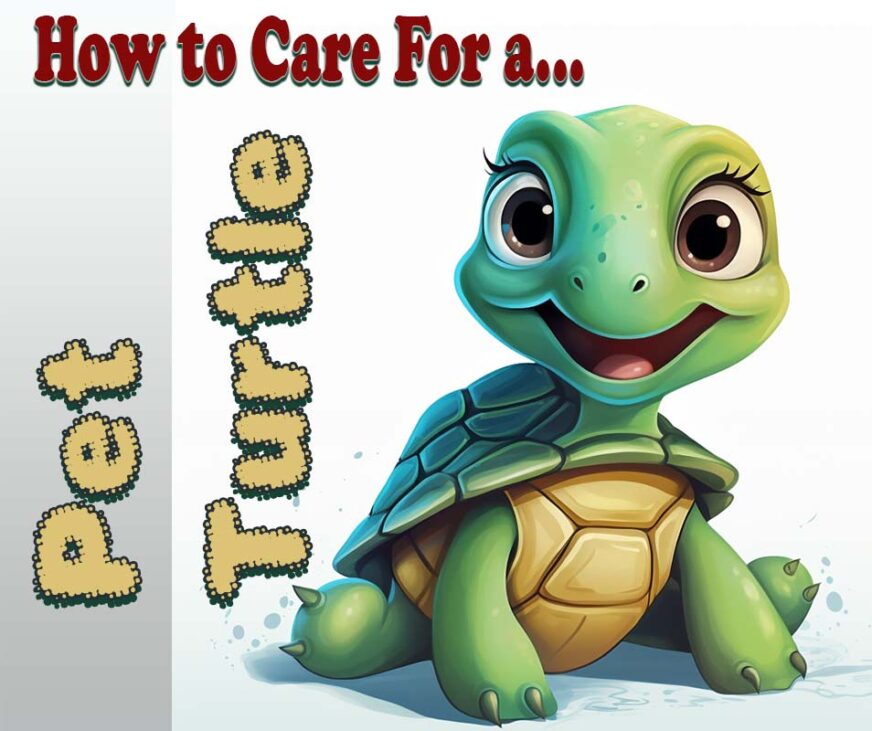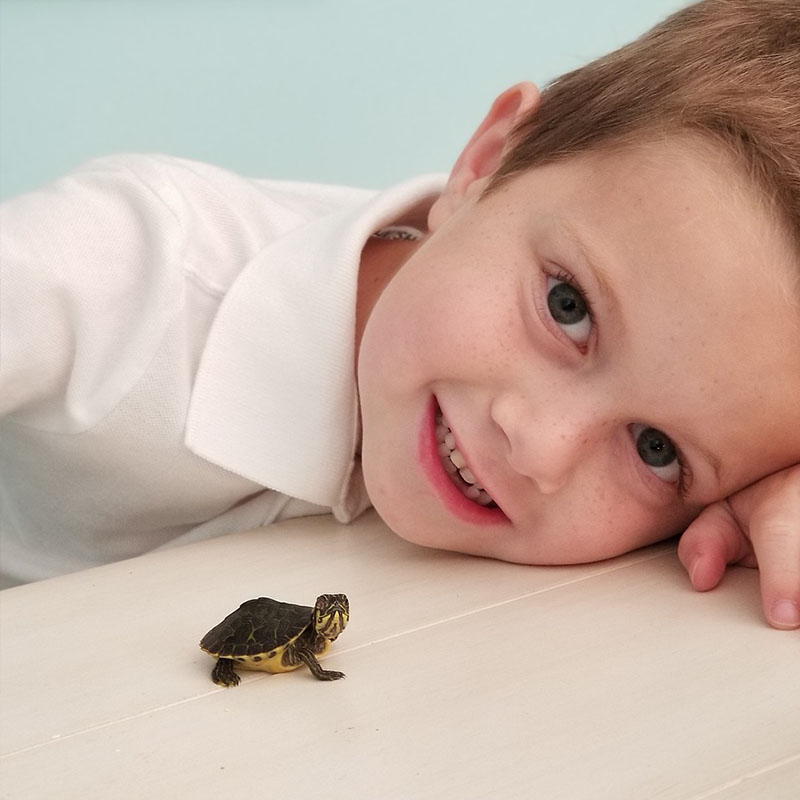info@petprintstudio.com
How to Care For a Pet Turtle

Living with a pet turtle can be a fascinating and rewarding experience. Turtle is unique creature that require proper care and attention to thrive in a domestic environment. In this guide, we will explore the essential aspects of turtle care, including their habitat, diet, health, and general well-being.

Creating the Ideal Habitat For a Turtle

Choosing the Right Enclosure
Selecting an appropriate enclosure is crucial for the well-being of your pet turtle. Consider the following factors when choosing a habitat:
- Size: The enclosure should provide ample space for your turtle to move around comfortably. As a general rule, provide at least 10 gallons of water per inch of shell length.
- Material: Glass or plastic aquariums with sturdy lids are common choices. Make sure the enclosure is escape-proof and allows for proper ventilation.
- Land and Water Areas: Turtles need both water and land areas. Create a basking spot with a heat lamp and a UVB light for the turtle to regulate its body temperature and obtain necessary UV rays.
- Substrate: Use a substrate such as aquarium gravel or river rocks for the water area, and provide non-toxic, clean soil or sand for the land area.
Maintaining Water Quality
Clean and properly maintained water is vital for your turtle’s health. Follow these guidelines:
- Filtration: Use a filter designed for turtle tanks to remove impurities and maintain water quality. Replace the filter media regularly according to the manufacturer’s instructions.
- Temperature: Maintain the water temperature within the appropriate range for your turtle species. Generally, it should be between 75°F and 85°F (24°C and 29°C).
- Dechlorination: Tap water may contain chlorine or other chemicals harmful to turtles. Use a water conditioner to remove these substances before filling the tank.
- Regular Cleaning: Perform regular water changes, removing about 25% of the water and replacing it with dechlorinated water every week. Clean the tank and the filter system as needed.
Feeding Your Turtle

Understanding Dietary Needs
Turtles have diverse dietary requirements, and their diet should mimic their natural feeding habits. Consider the following guidelines:
- Commercial Diets: Commercial turtle pellets can serve as the staple of their diet. Choose a high-quality brand that provides balanced nutrition. Pellets should make up about 25% of their diet.
- Fresh Vegetables: Offer a variety of dark, leafy greens such as kale, collard greens, and dandelion greens. These should constitute about 50% of their diet.
- Protein: Provide occasional protein sources such as cooked fish, earthworms, or insects. Protein should make up approximately 25% of their diet.
- Supplements: Use a calcium supplement to ensure proper shell and bone development. Some turtles may also benefit from a multivitamin supplement, but consult a veterinarian for specific recommendations.
Feeding Schedule and Portions
Establishing a regular feeding schedule is important for your turtle’s well-being. Consider the following guidelines:
- Young turtles: Feed them every day, offering a variety of foods in small portions.
- Adult turtles: Feed them every other day, adjusting portion sizes to avoid overfeeding.
- Remove uneaten food after 20-30 minutes to maintain water cleanliness and prevent bacterial growth.
Ensuring Good Health of Your Turtles

Regular Veterinary Care
Regular check-ups with a reptile veterinarian are essential for monitoring your turtle’s health and detecting any potential issues. Veterinary care may include:
- Routine exams: Regular physical examinations help identify signs of illness or disease.
- Parasite prevention: Regular fecal exams and appropriate treatments can prevent and control internal parasites.
- Shell health: Shell abnormalities, such as shell rot, should be examined and treated by a professional.
- Vaccinations: Depending on your turtle’s species and location, vaccinations may be necessary. Consult your veterinarian for guidance.
Environmental Enrichment
Providing a stimulating environment is crucial for your turtle’s mental and physical well-being. Consider the following:
- Enrichment Items: Offer items such as floating logs, rocks, and hiding spots to provide stimulation and mimic their natural habitat.
- Interactions: Interact with your turtle by providing supervised time outside the enclosure for exercise and exploration. Ensure safety and avoid exposure to potential hazards.
Conclusion
Caring for a pet turtle requires knowledge, commitment, and attention to detail. By creating a suitable habitat, providing a balanced diet, and ensuring regular veterinary care, you can enjoy a fulfilling and rewarding experience with your pet turtle. Remember, each turtle species may have specific care requirements, so always research and consult with experts to provide the best possible care for your unique pet.

